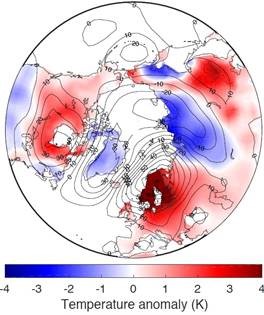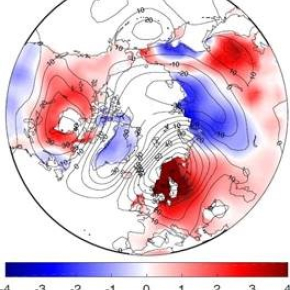
Climate: a major step forward for simulating extreme events
Assessing the quantitative study of extreme climactic events such as heatwaves and hurricanes is a major contemporary challenge. To answer these questions, climate models require considerable calculation time, which means that we cannot quantify the most extreme events, which are also those with the highest socio-economic risks and impacts. Researchers from the Physics Laboratory at ENS de Lyon (CNRS/Université Claude Bernard Lyon 1/ENS de Lyon) are proposing a new algorithm whose goal is to reduce the calculation times associated with modelling these phenomena by a factor of 100 to 1000. With this algorithm, the researchers have managed to evaluate the probability of events that could not have been observed by existing methods. Specifically, they have shown that extreme heatwaves in Europe are correlated with hot periods in North America and Asia and cold periods in Russia and Greenland. This methodological advance opens the path to studies that were previously impossible, to quantify the dynamics of extreme events in present and future climates.
These results were published on December 19, 2017 in PNAS.

© F. Bouchet
Bibliography:
Computation of extreme heat waves in climate models using a large deviation algorithm, F.Ragone, J.Wouters, F.Bouchet. PNAS, 19 December 2017. DOI: 10.1073/pnas.1712645115


